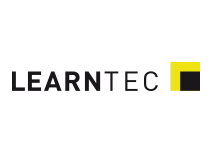Content Curation is Changing the Culture of Learning
New Learning Lab
Karlsruhe/Wiesbaden, April 2025 - Stefan Diepolder has been an active promoter and co-designer of these future skills since the very beginning of the international curation movement. He has coached more than 100 curation sessions over the years. As co-founder of the New Learning Lab, he will share his insights with visitors at the LEARNTEC Congress on Wednesday, May 7 at 10:45 a.m.

How important do you think content curation is today?
Stefan Diepolder: I consider content curation, or rather a curating mindset among employees in organizations, to be more important and relevant today than ever before. Curation enables us to deal efficiently with the overwhelming flood of available information, ideas and opportunities and to filter out relevant content in a targeted manner.
At a time when we can create, analyze and publish any type of media in minutes with the help of AI, human expertise makes all the difference. When curating content, we use our unique perspectives by acting as human filters to evaluate information, methods and tools in a targeted approach, checking its relevance, authenticity and importance and extracting meaning for ourselves, which in turn triggers a valuable learning effect.
We evaluate and share the essence with our colleagues and provide them with the opportunity to obtain targeted information and further training within our area of expertise. They do not have to spend time searching for the right sources and materials, because they can rely on the curators, who guarantee the quality of the content based on our name and reputation.
This trust in colleagues is a significant advantage over AI systems and the mechanism is very effective in providing learning paths and learning plans as well as learning and learning experience platforms, among other things.
Should it be internal or external? And what are the advantages of each approach?
Stefan Diepolder: Both internal and external curation have their advantages. Internal curation is particularly valuable for filtering out current and relevant topics from the company's perspective and placing them in context and promotes internal communication and collaboration.
For example, take the dominating trend of AI: a landing page maintained and prominently presented by a team of in-house AI experts gets to the heart of the most important topics on a daily basis. Which tools can I use? Who can I contact? What training opportunities are there? How can I take my first steps? Are there any successful use cases that are already available?
In an ideal scenario, I would no longer have to go looking for information externally and would still be provided with all the important and relevant information and resources, even with the corporate context. This information no longer needs to be verified by me as a non-expert who has no content expertise, because the internal experts have already done this. That's a considerable relief!
External curating outside your own bubble brings fresh perspectives and new trends into the company and increases the ability to innovate. It strengthens cross-organizational exchange and generates new impulses and ideas. Personally, I experience this every day in my New Learning Lab community, where around 160 learning enthusiasts from a wide range of backgrounds and organizations are currently curating together and learning from and with each other in a self-organized way.
It is particularly impressive how quickly and effectively new ideas, solutions and synergies emerge when people start to share their own work and challenges in a protected space.
I consider a combination of both approaches to be ideal because it creates a balanced knowledge ecosystem. This allows companies to benefit from both internal know-how and external trends.
How much effort does that mean for a company?
Stefan Diepolder: Content curation requires a certain amount of effort to establish systems, mechanisms and processes, especially in the initial phase.
Employees interact with information and people daily, develop ideas and solutions and perform value-adding work. In many cases, they already unconsciously perform parts of the curation process. When employees focus on their expertise, contextualize, document and proactively share relevant parts of their work and valuable information, a vibrant knowledge ecosystem is established without overwhelming the individual.
There is no need to train all employees to become active and passionate curators. It makes sense to test the mechanisms of content curation with an “alliance of the willing” and put them actively into practice on your own topics. For example, this can be combined very well with the content maintenance of a learning experience platform. The mindset of sharing knowledge, mutual recommendation and exchange is therefore introduced to large parts of the organization.
Curation mechanisms work completely independently of tools and provide valuable services for the sensible use of AI models, e.g. when critically scrutinizing AI outputs. The effort involved can be more than compensated for in the long term by efficiency and productivity improvements.
Can the effects of content curation be measured or, above all, described for an organization?
Stefan Diepolder: The consistent use of content curation leads to improved personal and organizational knowledge management and can save considerable time and (thinking) resources for the organization.
Studies have shown that knowledge workers spend between 1.8 and 3.6 hours per day searching for the right information and people, depending on the study (sources include: McKinsey Study 2012 and Coveo Study 2022).
You can calculate the return on investment if each employee spends just 30 minutes less a day searching for the necessary information!
In terms of quality, an increase in employee satisfaction and innovative strength can be noted. Content curation goes hand in hand with a change in learning culture. The success is ultimately reflected in a more agile and knowledge-based corporate culture.
Which requirements do you believe must be met for a company to be able to call itself a “learning organization”?
Stefan Diepolder: I believe that all organizations are “learning organizations”. The human brain spends 24 hours a day, 7 days a week engaged in learning. We cannot “not learn”, to use Paul Watzlawick's famous quote. The key is what we learn, and how quickly new, relevant skills and abilities are identified, developed, tested and used to create value at work.
Innovative, successful and future-oriented organizations are characterized by a culture of continuous learning and openness to change. It is important that managers actively promote personal and organizational learning and act as role models. Equally important are technological infrastructures that facilitate the exchange of knowledge.
Learning organizations are well connected internally and externally and are characterized by a high level of trust. Employees are encouraged to actively share their experience and knowledge and try out new approaches. There is no distinction between learning and working; every meeting, every project and every conversation is seen as an opportunity to reflect and learn from and with each other.

